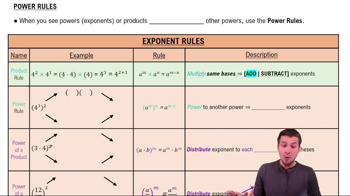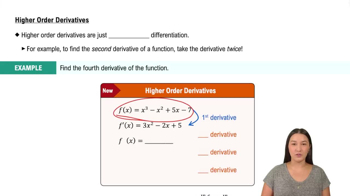Textbook Question
By computing the first few derivatives and looking for a pattern, find the following derivatives.
c. d⁷³/dx⁷³ (x sin x)
 Verified step by step guidance
Verified step by step guidance Verified video answer for a similar problem:
Verified video answer for a similar problem:



 2:42m
2:42mMaster Higher Order Derivatives with a bite sized video explanation from Patrick
Start learning